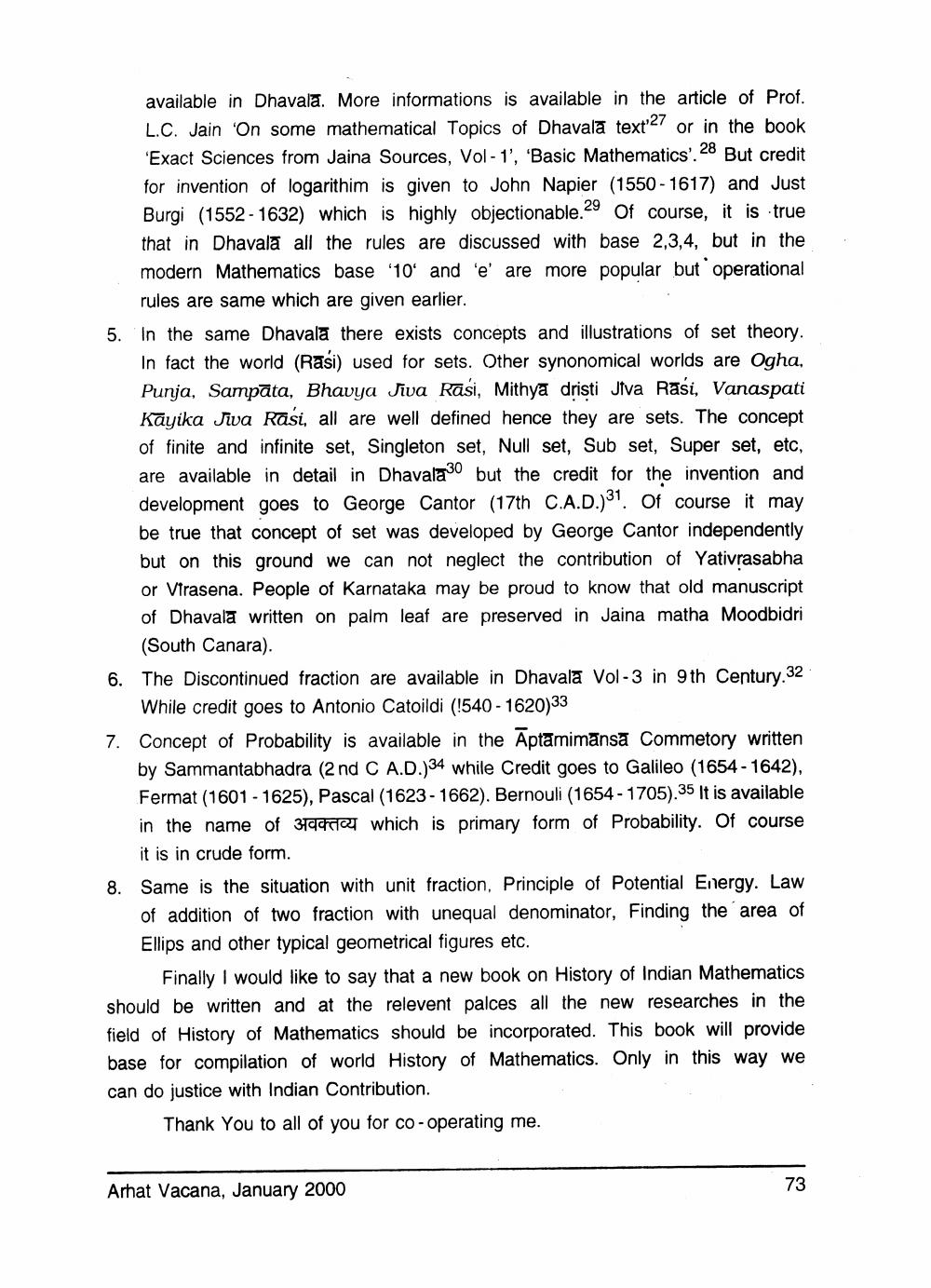________________
available in Dhavala. More informations is available in the article of Prof. L.C. Jain On some mathematical Topics of Dhavala text27 or in the book 'Exact Sciences from Jaina Sources, Vol-1', 'Basic Mathematics'. 28 But credit for invention of logarithim is given to John Napier (1550 - 1617) and Just Burgi (1552 - 1632) which is highly objectionable.29 Of course, it is true that in Dhavala all the rules are discussed with base 2,3,4, but in the modern Mathematics base '10' and 'e' are more popular but operational
rules are same which are given earlier. 5. In the same Dhavala there exists concepts and illustrations of set theory.
In fact the world (Rasi) used for sets. Other synonomical worlds are Ogha, Punja, Sampāta, Bhavya Jiva Rasi, Mithya dristi Jiva Raši, Vanaspati Kāyika Jwa Rasi, all are well defined hence they are sets. The concept of finite and infinite set, Singleton set, Null set, Sub set, Super set, etc, are available in detail in Dhavala30 but the credit for the invention and development goes to George Cantor (17th C.A.D.)". Of course it may be true that concept of set was developed by George Cantor independently but on this ground we can not neglect the contribution of Yativrasabha or Virasena. People of Karnataka may be proud to know that old manuscript of Dhavala written on palm leaf are preserved in Jaina matha Moodbidri
(South Canara). 6. The Discontinued fraction are available in Dhavala Vol-3 in 9th Century 32
While credit goes to Antonio Catoildi (!540 - 1620)33 7. Concept of Probability is available in the Aptamimansa Commetory written
by Sammantabhadra (2nd C A.D.)34 while Credit goes to Galileo (1654 - 1642), Fermat (1601 - 1625), Pascal (1623-1662). Bernouli (1654-1705).35 It is available in the name of 31977 which is primary form of Probability. Of course
it is in crude form. 8. Same is the situation with unit fraction, Principle of Potential Energy. Law
of addition of two fraction with unequal denominator, Finding the area of Ellips and other typical geometrical figures etc.
Finally I would like to say that a new book on History of Indian Mathematics should be written and at the relevent palces all the new researches in the field of History of Mathematics should be incorporated. This book will provide base for compilation of world History of Mathematics. Only in this way we can do justice with Indian Contribution.
Thank You to all of you for co-operating me.
Arhat Vacana, January 2000




